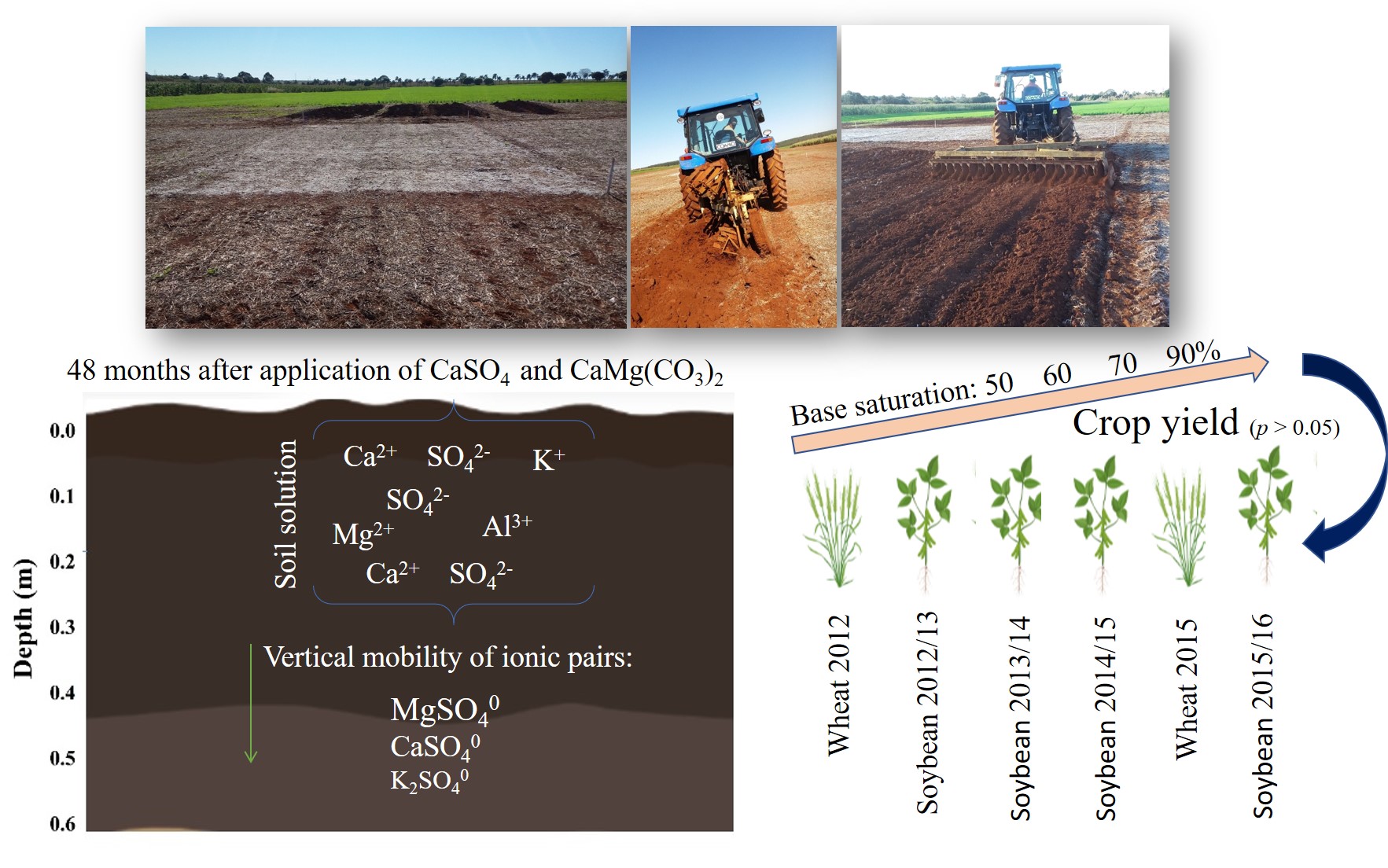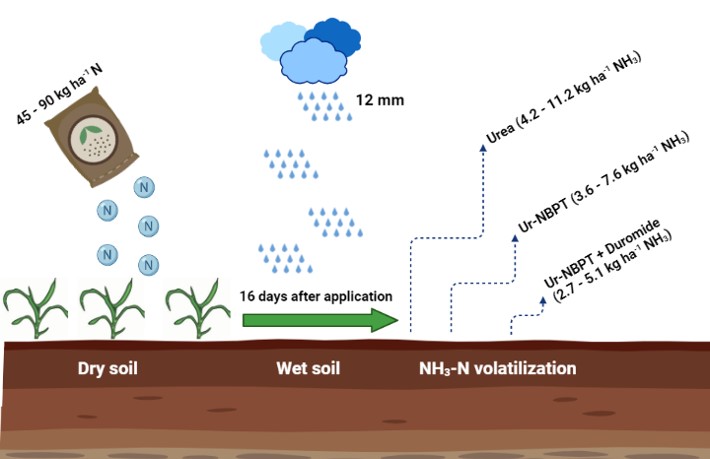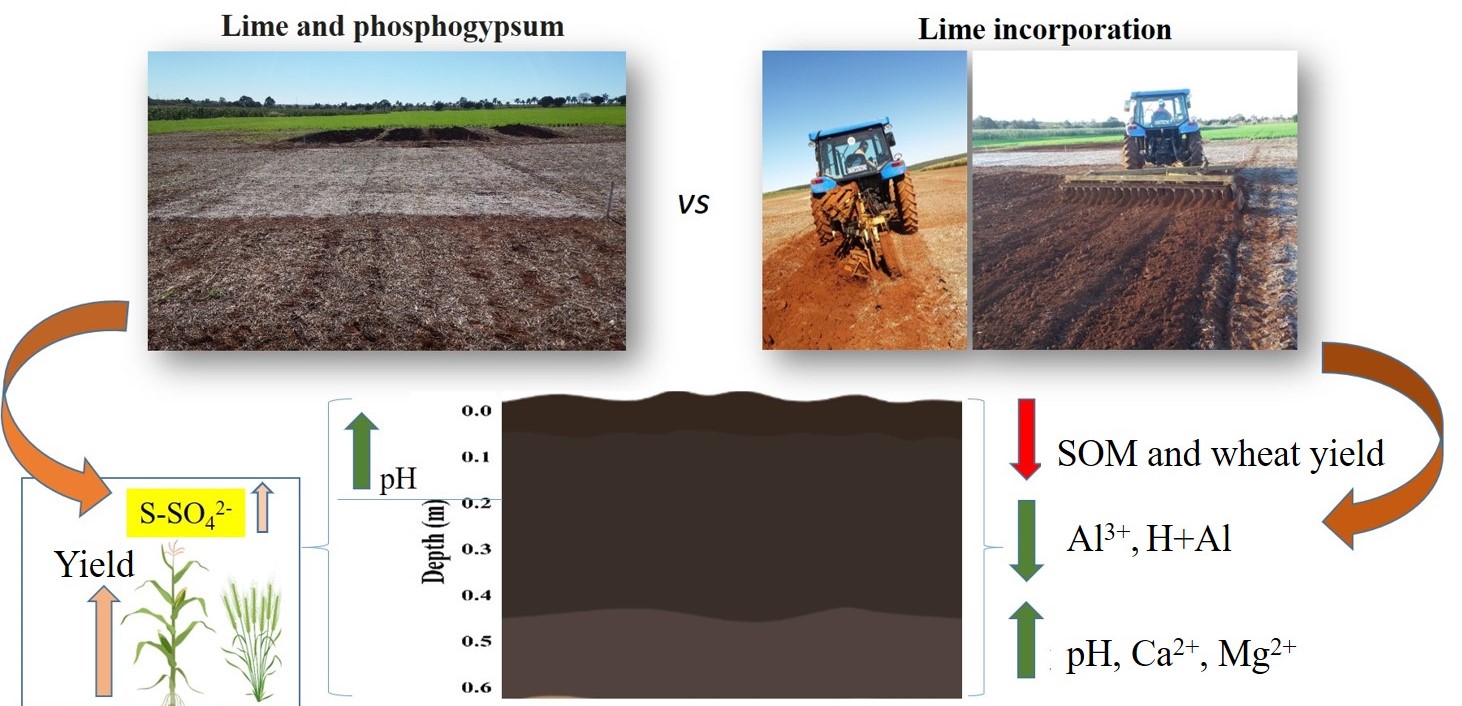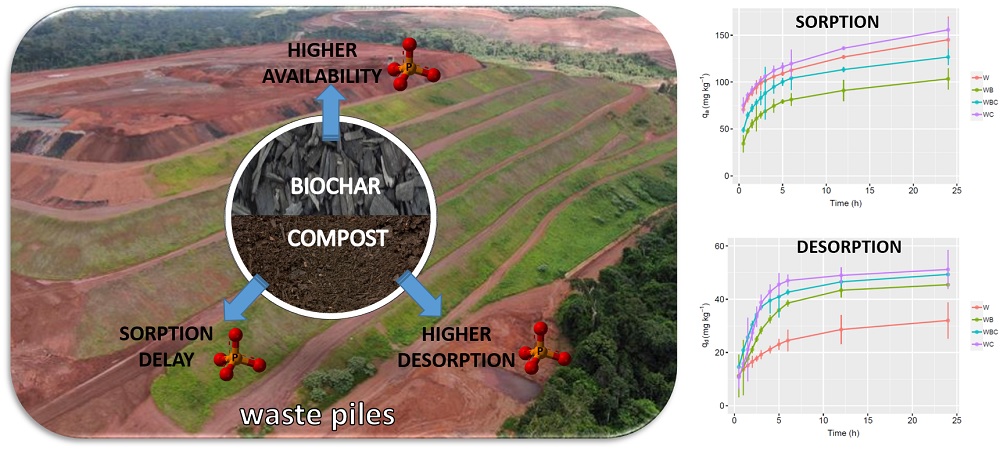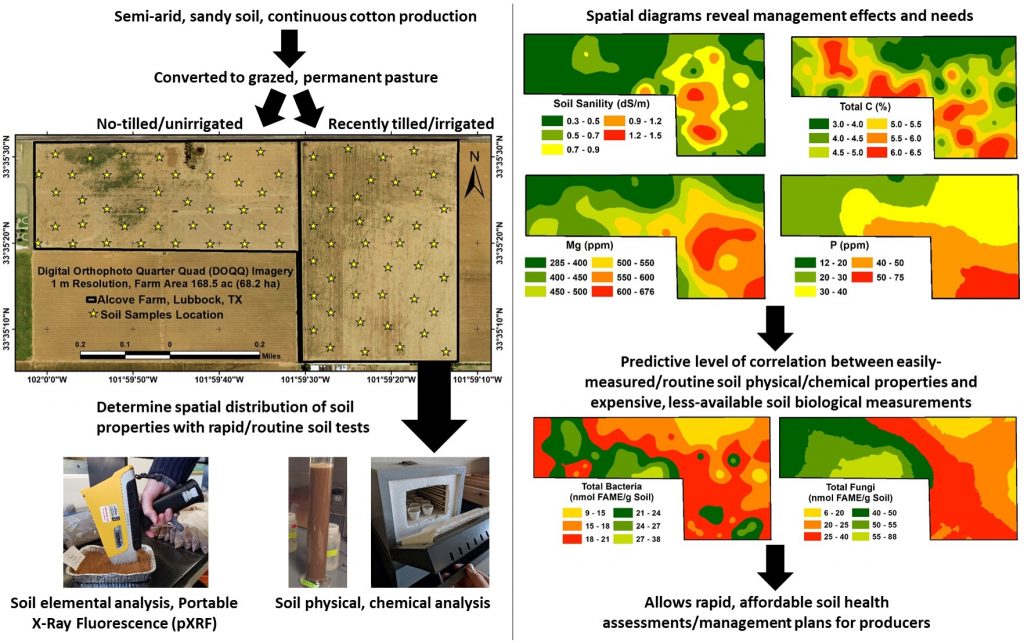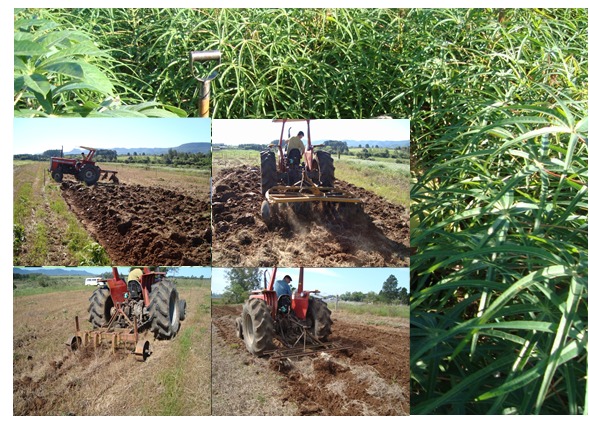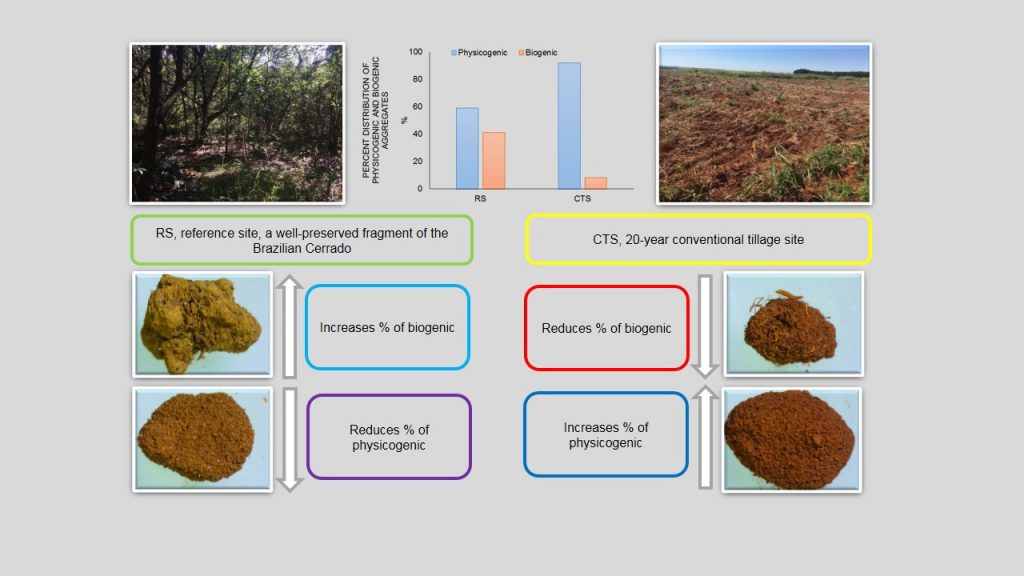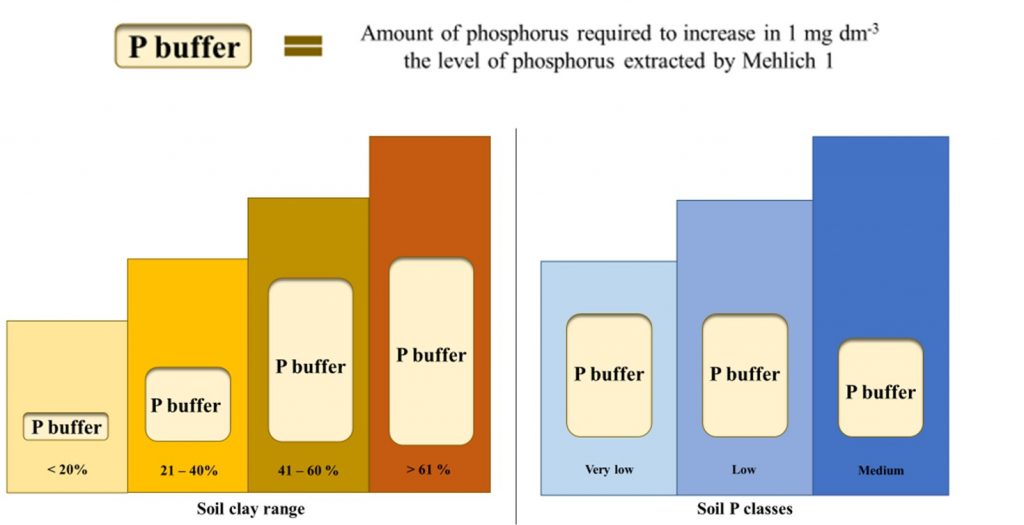Forms of lime application and use of phosphogypsum in low acid soil in southern Brazil: soybean-wheat yield and soil chemical properties
05/Oct/2021
ABSTRACT Brazil is currently the leading country in no-till (NT) farming, particularly on Ferralsols (Latossolos), the most abundant soil type. These soils are characterized by subsurface acidity that cannot be effectively corrected by surface application of additives. In this situation, the use of phosphogypsum can be advantageous. This study aimed to assess the residual effects of lime and phosphogypsum application on a clayey Ferralsol, and four soybean and two wheat yields in southern Brazil. The area has been cultivated under […]
Geotechnical properties of some kaolinite-rich Brazilian Vertisols
05/Oct/2021
Abstract Vertisols presenting kaolinite codominance or prevalence were already reported in several countries worldwide. However, the literature has few studies focused on investigating the influence of this clay mineral in soil geotechnical behavior. This study aimed to carry out the characterization of Vertisols in Bahia State, Brazil, to understand the influence of physical, chemical, and mineralogical properties on their geotechnical behavior, as these soils have high natural fertility and have been used for agricultural activity, but with great risk due […]
Duromide increase NBPT efficiency in reducing ammonia volatilization loss from urea
09/Sep/2021
ABSTRACT Novel fertilizer stabilization technologies are needed to decrease ammonia (NH3-N) losses and increase nitrogen use efficiency. Duromide + NBPT is a new technology that combines two molecules, Duromide and NBPT, whose propose is to increase the efficiency of the urease inhibitor NBPT in reducing NH3-N loss from urea. Preliminary results showed that Duromide + NBPT can be a more effective product than just NBPT, particularly under low soil pH and high-temperature conditions. This study aimed to compare the effects […]
Lime and phosphogypsum application management: changes in soil acidity, sulfur availability and crop yield
13/Aug/2021
ABSTRACT Oxisols ( Latossolos ) are widely distributed in tropical zones and generally characterized by high levels of surface and subsurface acidity. In Brazil, most Oxisols are managed under no-till conditions with surface application of acidity amendments. This study aimed to evaluate lime application strategies (incorporated and surface) for achieving the desired soil base saturation (BS%) levels (44, 60, 70, and 90 %) and the effect of phosphogypsum + lime application on soil chemical properties as well as wheat and […]
Biochar and conventional compost reduce hysteresis and increase phosphorus desorbability in iron mining waste
21/Jul/2021
ABSTRACT: Phosphorus (P) fixation in the soil reduces the utilization of this element by plants and can be one of the main problems for fertilization management in soils containing Fe oxides. As a strategy to minimize the effects of P retention, organic materials, such as biochar or commercial composts, may be useful tools to maintain P availability and delay immobilization of this element in the soil, thereby benefiting, for example, the rehabilitation of areas impacted by Fe mining. The objective […]
On-farm evaluation of regenerative land-use practices in a semi-arid pasture agroecosystem in West Texas, USA
02/Jun/2021
ABSTRACT Continually rising scarcity in water and nutrient resources, especially in semi-arid agricultural systems, combined with increased frequency of extreme weather events such as drought, contribute to a growing need for resilient and regenerative agricultural ecosystems. However, evaluating a myriad of combinations of producer-led sustainable management practices in on-farm research remains challenging. Few studies have elucidated spatial variability in measured soil properties across the study area due to logistical and economic constraints. As such, this study aimed to: 1) establish […]
Is cassava yield affected by inverting tillage, chiseling or additional compaction of no-till sandy-loam soil?
02/Jun/2021
ABSTRACT Defining a suitable soil tillage option that provides adequate soil physical conditions for optimum cassava (Manihot esculenta Crantz) productivity has not been adequately researched in southern Brazil. This study aimed to evaluate, in an Argissolo Vermelho-Amarelo Distrófico (Acrisol or Hapludalf), three tillage methods – conventional (inverting) tillage, chiseling, and long-term no-tillage (without and with, additional soil compaction), as affecting soil hydro-physical properties and cassava yield, in southern Brazil. Undisturbed and disturbed soil samples were collected from row and interrow […]
Physicogenic and biogenic aggregates under different management systems in the Cerrado region, Brazil
23/Apr/2021
ABSTRACT An important strategy for the sustainable management of Cerrado soils is no-till (NT) systems, which may improve soil properties, particularly aggregation. Soil aggregates can be categorized according to their formation pathways into physicogenic (Phy) and biogenic (Bio). This study aimed (i) to quantify the relative proportion of physicogenic and biogenic aggregates and (ii) evaluate the levels of total organic carbon and their respective humic and physical fractions in the aggregates’ formation pathways. The following managed and unmanaged sites were […]
Refining phosphorus fertilizer recommendations based on buffering capacity of soils from southern Brazil
16/Mar/2021
ABSTRACT The phosphorus (P) rates recommended for corrective fertilization-P of soils from southern Brazil may be insufficient to reach the critical level for optimal plant growth. This study aimed to quantify the fertilizer-P rates for total correction fertilization with varying soil buffering capacity in the states of Rio Grande do Sul (RS) and Santa Catarina (SC). Soil samples from 0.00-0.10 and 0.10-0.20 m layers were collected from 41 locations distributed in both states. Twelve P rates were applied to each […]
Soil spectral library of Piauí State using machine learning for laboratory analysis in Northeastern Brazil
10/Mar/2021
ABSTRACT Soil chemical and physical analyses are the major sources of data for agriculture. However, traditional soil analyses are time-consuming, not cost-efficient, and not environmentally friendly. An alternative to traditional soil analyses is soil spectroscopy. This technique is a low-cost and quick analytical method, which can be implemented in a laboratory and/or in-situ. Nevertheless, some spectrometers are expensive and do not contemplate the entire spectrum. Despite this limitation, the main objective of the study was to create a soil spectral […]

